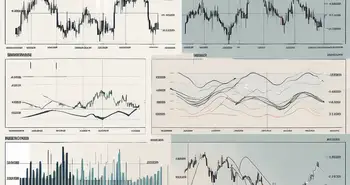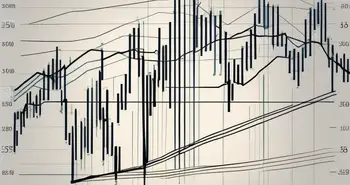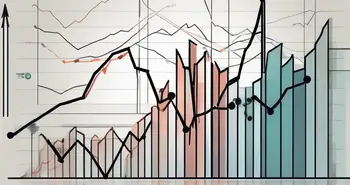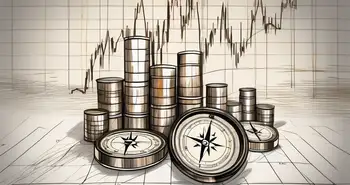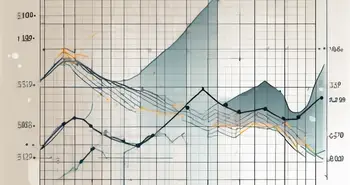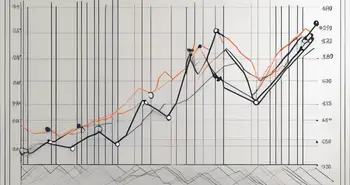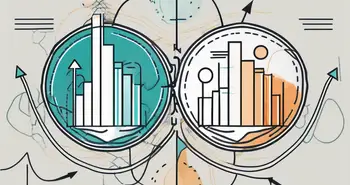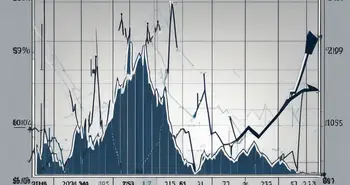The Volatility Trading Guide
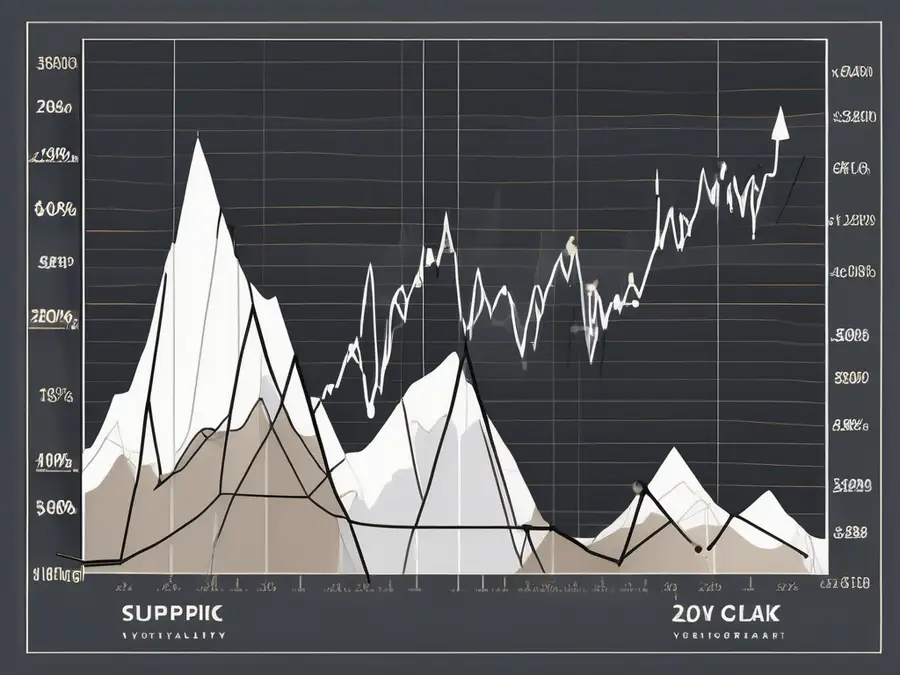
I have always been fascinated by the world of trading. The thrill of analyzing market trends, making predictions, and executing trades never fails to excite me. One area of trading that has particularly captured my attention is volatility trading. In this ultimate guide, I will take you on a journey through the fascinating world of volatility trading and equip you with the knowledge and strategies to succeed in this fast-paced market.
Understanding Volatility Trading
Volatility is the measure of price fluctuations in the market. In simple terms, it represents the speed and magnitude of price changes. Understanding volatility is crucial for traders as it provides valuable insights into market behavior and helps identify potential profit opportunities.
The Basics of Volatility
Volatility can be highly unpredictable, but by analyzing historical data, traders can gain a better understanding of its patterns and trends. One commonly used measure of volatility is the standard deviation of returns. This statistical tool helps quantify the degree of price fluctuations.
Traders often use volatility as a gauge for risk assessment. Higher volatility typically indicates higher risk, while lower volatility suggests a more stable market environment. By monitoring volatility levels, traders can adjust their strategies to account for potential market fluctuations and mitigate risk.
Key Terms in Volatility Trading
Before diving into volatility trading strategies, it's important to be familiar with some key terms. These terms include implied volatility, realized volatility, volatility skew, and volatility indexes, to name a few. Understanding these terms will provide a solid foundation for your trading journey.
Implied volatility refers to the market's expectation of future volatility, often derived from option prices. Realized volatility, on the other hand, reflects actual price fluctuations that have occurred over a specific period. Volatility skew refers to the differing implied volatility levels across different strike prices or expiration dates, offering insights into market sentiment and potential price movements.
The Importance of Volatility in Trading
Volatility plays a crucial role in trading, affecting various aspects of a trader's decision-making process. Let's explore two key areas where volatility holds significant importance.
Role of Volatility in Market Predictions
Volatility provides valuable information that can help traders make informed predictions about market movements. High volatility suggests greater market uncertainty, while low volatility may indicate a relatively stable market. By analyzing volatility trends, traders can anticipate potential price swings, enabling them to enter or exit trades at favorable moments.
Volatility and Risk Management
Risk management is a vital aspect of trading, and volatility plays a crucial role in it. By understanding volatility, traders can assess the level of risk associated with their trades and implement appropriate risk management strategies. Volatility can help identify the optimal position size, stop-loss levels, and profit targets, ensuring that traders can protect their capital.
Moreover, volatility can also impact trading strategies and the choice of financial instruments. In highly volatile markets, traders may opt for strategies that capitalize on price fluctuations, such as day trading or scalping. These short-term trading approaches thrive in volatile conditions where prices can change rapidly, offering multiple opportunities for profit.
Additionally, different financial instruments exhibit varying levels of volatility. For example, currency pairs in the foreign exchange market may have higher volatility compared to blue-chip stocks in the equities market. Traders need to consider the volatility of the assets they are trading to align their strategies accordingly. Diversifying a portfolio with assets of varying volatility levels can help spread risk and optimize returns in different market conditions.
Strategies for Volatility Trading
Now that we understand the importance of volatility in trading, it's time to explore some strategies that can help us capitalize on market fluctuations.
Long Volatility Strategies
Long volatility strategies involve profiting from an increase in market volatility. These strategies can include purchasing options, such as straddles or strangles, or trading volatility exchange-traded products (ETPs). Traders employing long volatility strategies anticipate significant price moves and aim to profit from them.
One popular long volatility strategy is the purchase of straddles, which involves buying both a call option and a put option with the same strike price and expiration date. This strategy benefits from significant price swings in either direction, as the trader profits from the increase in volatility. Another approach is trading volatility ETPs, which are designed to track the CBOE Volatility Index (VIX) and provide exposure to market volatility.
Short Volatility Strategies
Short volatility strategies involve taking advantage of low market volatility. Traders utilizing these strategies can sell options or use strategies such as writing covered calls. The goal is to profit from stable or slightly declining market conditions. However, it's crucial to be aware of the potential risks associated with short volatility strategies.
One common short volatility strategy is selling covered calls, where an investor sells call options on a stock they own. This strategy generates income from the premiums received but limits the potential upside if the stock price rises sharply. Another approach is selling put options, which can be profitable in stable or rising markets but carries the risk of significant losses if the market experiences a downturn.
Tools for Volatility Trading
Having the right tools is essential for successful volatility trading. Let's explore some tools that can help traders navigate this dynamic market.
Volatility Indexes and Indicators
Volatility indexes, such as the widely known VIX (CBOE Volatility Index), can provide insights into market expectations and sentiment. Volatility indicators, such as Bollinger Bands or Average True Range (ATR), help traders identify potential entry or exit points based on price volatility. These tools act as valuable guides, empowering traders to make informed decisions.
Software and Platforms for Volatility Trading
To effectively trade volatility, it's crucial to have access to reliable software and trading platforms. Numerous sophisticated trading platforms offer features specifically designed for volatility trading, such as advanced charting tools, real-time data, and options trading capabilities. Choosing the right platform for your trading style can significantly enhance your overall trading experience.
Tips for Successful Volatility Trading
As an experienced volatility trader, I've gathered valuable lessons along the way. Here are some tips to help you navigate the volatility trading landscape:
Managing Risk in Volatility Trading
Always prioritize risk management. Volatility trading can be highly lucrative, but it also carries inherent risks. Set clear stop-loss levels, diversify your trades, and never risk more than you can afford to lose. By effectively managing risk, you position yourself for long-term success.
Staying Informed: Market Trends and News
Stay updated with market trends and news. Volatility can be influenced by various factors, such as economic releases, geopolitical events, or company earnings reports. Keeping a close eye on such developments allows you to make informed trading decisions based on the evolving market landscape.
Remember, successful trading requires continuous learning, adaptability, and discipline. As you embark on your volatility trading journey, remain patient and committed to honing your skills.
FAQ
Q: What is volatility trading?
A: Volatility trading involves profiting from price fluctuations in the market. Traders analyze volatility patterns and use various strategies to capitalize on potential price swings.
Q: Why is volatility important in trading?
A: Volatility provides valuable insights into market behavior and helps traders make predictions. It also plays a crucial role in risk management, allowing traders to assess and mitigate potential risks.
Q: What are some strategies for volatility trading?
A: Two commonly used strategies are long volatility strategies and short volatility strategies. Long volatility strategies aim to benefit from increased market volatility, while short volatility strategies aim to capitalize on low market volatility.
Q: What tools can help in volatility trading?
A: Tools such as volatility indexes, volatility indicators, and specialized trading platforms can assist traders in volatility trading. These tools provide valuable information and features tailored to the needs of volatility traders.
Q: What are some tips for successful volatility trading?
A: Prioritize risk management, stay informed about market trends and news, and be disciplined in your trading approach. Continuous learning and adaptability are key to success in volatility trading.
By following the insights and strategies shared in this ultimate guide, you are well-equipped to navigate the exciting and lucrative world of volatility trading. Remember to always approach trading with a disciplined mindset, adapt to market conditions, and continuously expand your knowledge. Good luck on your trading journey!
Ready to put your newfound knowledge of volatility trading into practice? Look no further than Morpher, the revolutionary trading platform that's changing the game with blockchain technology. With Morpher, you can trade a vast array of assets, from traditional stocks and forex to cutting-edge markets like NFTs, all with zero fees and infinite liquidity. Embrace the power of fractional investing, short selling without interest fees, and up to 10x leverage to amplify your trades. Plus, enjoy the safety and control of a non-custodial Morpher Wallet. Experience a unique trading environment with Virtual Futures on the Ethereum Blockchain. Sign Up and Get Your Free Sign Up Bonus today, and join the global community of traders who are already shaping the future of investing with Morpher.

Disclaimer: All investments involve risk, and the past performance of a security, industry, sector, market, financial product, trading strategy, or individual’s trading does not guarantee future results or returns. Investors are fully responsible for any investment decisions they make. Such decisions should be based solely on an evaluation of their financial circumstances, investment objectives, risk tolerance, and liquidity needs. This post does not constitute investment advice.

Painless trading for everyone
Hundreds of markets all in one place - Apple, Bitcoin, Gold, Watches, NFTs, Sneakers and so much more.

Painless trading for everyone
Hundreds of markets all in one place - Apple, Bitcoin, Gold, Watches, NFTs, Sneakers and so much more.

